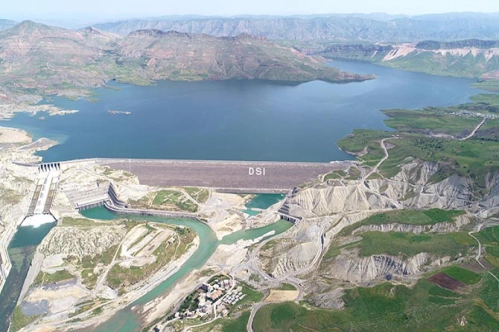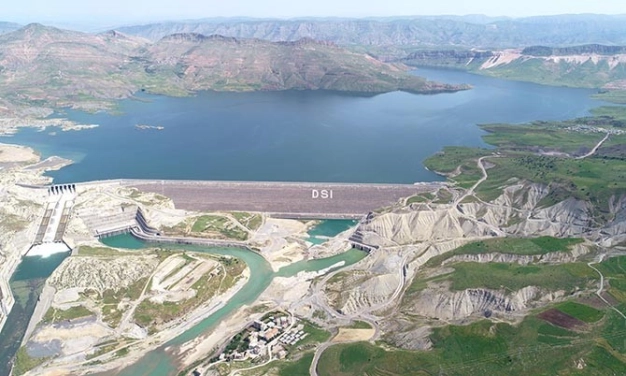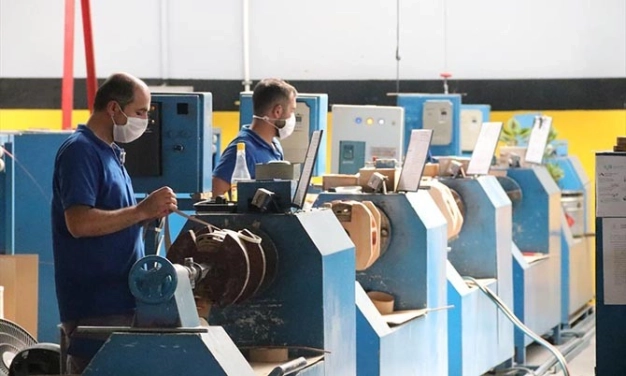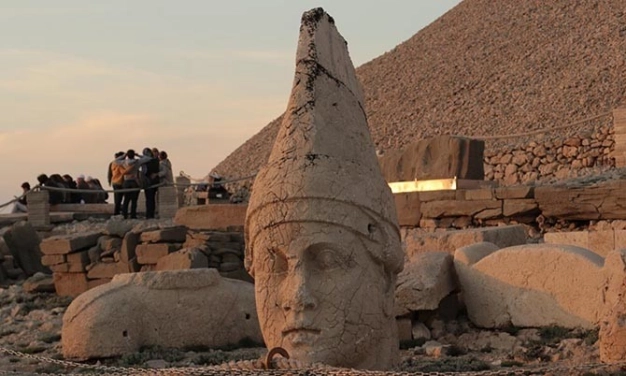- Son Dakika
- Gündem
- Ekonomi
- Finans
- Yazarlar
- Sektörel
- Kültür-Sanat
- Dünya
- Teknoloji
- FOTOĞRAF GALERİSİ
- VİDEO GALERİSİ
- e-Gazete
Gelişmelerden haberdar olmak için İstanbul Ticaret Haberleri uygulamasını indirin

 To date, over US$28 billion has been spent on the GAP. Yet, the project has already amortized itself even through the power generation worth at US$28.4 billion. Thanks to the added value achieved in agriculture, industry and tourism, the project has been proceeding towards becoming a model.
To date, over US$28 billion has been spent on the GAP. Yet, the project has already amortized itself even through the power generation worth at US$28.4 billion. Thanks to the added value achieved in agriculture, industry and tourism, the project has been proceeding towards becoming a model.
ŞEREF KILIÇLI
Started its journey in 1977 as an investment program in irrigation and hydro-electric power generation at Euphrates-Tigris Basin, with the master plan designed in 1989 the Southeastern Anatolia Project (GAP) turned into a regional development project which includes investments in agriculture, industry, transport, education, healthcare, rural and urban infrastructure. Covering nine cities consisting of Adıyaman, Batman, Diyarbakır, Gaziantep, Kilis, Mardin, Siirt, Şanlıurfa and Şırnak, GAP represents nearly 10 percent of Turkey’s surface area and population.
THE MOST EXTENSIVE PROJECT
As the most extensive and costly project in the history of the Republic of Turkey, GAP is being implemented as an integrated regional development project based on multi-sectorial and sustainable human development that aims to increase the region’s competitive power while strengthening economic and social integration. Within the project; elevating the economic and social indicators of the region to country’s average and increasing the living standards and welfare of the region’s inhabitants are intended through investments in agriculture, industry, energy, transport, education, and healthcare, rural and urban infrastructure.
 ENERGY AND IRRIGATION TARGETS
ENERGY AND IRRIGATION TARGETS
Initially, the construction of 22 dams, 19 hydro-electric power plants and irrigation networks were planned as part of GAP. An area of 1.8 million hectares was projected to become eligible for irrigation upon the completion of the project. A large part of the country’s energy demands were to be fulfilled through a yearly hydro-electric power generation of 27 billion kilowatt-hours..
INVESTMENT SHARE EXCEEDING 14 PERCENT
Completing the project rapidly, the region’s investments started to be increased regularly as of 2003. The share of GAP Region investments in the country’s assets decreased to 5 percent in 2001. In 2003-2019 periods, this share exceeded 14 percent. During this period, nearly TRY137.4 billion of resources at current prices were allocated to the investments as part of GAP, and almost 90 percent of these resources turned into investments worth TRY122.9 billion. In 2020, the funds allocated to the GAP Region from the Public Investment Program reached TRY4.7 billion.
90 PERCENT OF THE ENERGY PROJECTS COMPLETED
A total of 215 thousand hectares of land was opened to irrigation in the GAP Region until the end of 2002. This figure increased to 572 thousand hectares by the end of 2019. The energy projects’ actualization rate exceeded 90 percent with the Ilısu Dam and HPP Project launched in 2020. As the hydro-electric power plants completed as part of the project started operating, the monetary value of the electric energy they generated until the end of 2019 reached US$28.4 billion. This achievement stated that the GAP amortized itself. As part of the land consolidation and on-farm development projects in the region, the consolidation activities in 2.5 million hectares were accomplished. Investments were completed in industry, transport, culture, tourism and other infrastructural areas for contributing to the economy of the region and country through rapidly benefiting from the potential to be revealed with the irrigation of agricultural lands and strengthening of agricultural infrastructure in the region regarded as the ‘Fertile Crescent.’
SIX CITIES PRIORITIZED
In line with the new incentive law, Batman, Diyarbakır, Mardin, Siirt, Şanlıurfa and Şırnak of GAP Region remained in the 6th Region receiving the highest amount of support. Adıyaman and Kilis were assigned to the 5th Region, while Gaziantep was assigned to benefit from the 3rd Region funds. In 2002, 155 incentive certificates were granted in the GAP Region and an employment of 8 thousand and 753 people with a fixed investment of TRY872 million was foreseen. In 2019, 757 investment incentive certificates were drawn for the cities in the region and the projected fixed investment amount reached TRY9.7 billion and employment went up to 51 thousand and 182 people. In January 2003-September 2020 term, 8 thousand and 234 incentive certificates were granted in these cities. As part of these incentive certificates, an investment of TRY78.2 billion and an additional employment of nearly 381 thousand people were projected.
 THE NUMBER OF OIS REACHING 18
THE NUMBER OF OIS REACHING 18
Southeastern Development Project Regional Development Administration under the Ministry of Industry and Technology assumed a strategic role in developing the region with the projects on agriculture, industry, energy, environment, culture and tourism and social life it implemented in 2002-2019. In this period, the number of organized industrial sites (OIS) in the region reached 18 and the number of small industrial sites went to 38. In 2002, exports, amounting to US$584 million that equals 1.6 percent of Turkey’s total exports were conducted from the region. Though, in 2019 the region’s exports increased by 15 times and reached US$9.2 billion. This amount corresponds with 5.3 percent of Turkey’s total exports.
 INVESTMENTS IN EDUCATION, HEALTHCARE AND SOCIAL AREAS
INVESTMENTS IN EDUCATION, HEALTHCARE AND SOCIAL AREAS
The investments in the region in social, educational and healthcare areas continued. 35 thousand and 642 classrooms were built in 2008-2019. The number of universities in the region was merely three in 2002, it increased to 12 by the end of 2019. Regarding healthcare, in 2018 the number of hospitals reached 130 from 62 hospitals in 2002 and number of beds rose to 20 thousand and541, from the 8 thousand and 223 beds in 2002. The construction of sports halls and swimming pools to support the social development of the region continued. Within this scope, a sports hall with a viewer capacity of 28 thousand and 550 people, 10 football fields and 7 indoor swimming pools were launched to service in 2008 – 2019. 71 social institutions such as nursing homes and social protection centers, social services, barrier-free living and youth centers started to deliver services in the same period.
 PROGRESS IN TRANSPORT INFRASTRUCTURE AND TOURISM
PROGRESS IN TRANSPORT INFRASTRUCTURE AND TOURISM
Critical developments in transport infrastructure that enable access to other regions, cities, ports and neighboring countries have also been achieved. The number of domestic and foreign tourists visiting facilities certified by municipalities remained at 380 thousand in 2002; in 2018 this figure reached 866 thousand. The number of overnights of domestic and foreign tourists increased to nearly 1 million 438 thousand from 586 thousand in the same period. Compared to 2002, the number of tourists accommodating at facilities with tourism certificates increased by 3.5 times in 2018 and rose to approximately 1.9 million while the number of overnights nearly quadrupled and went to 2.8 million.